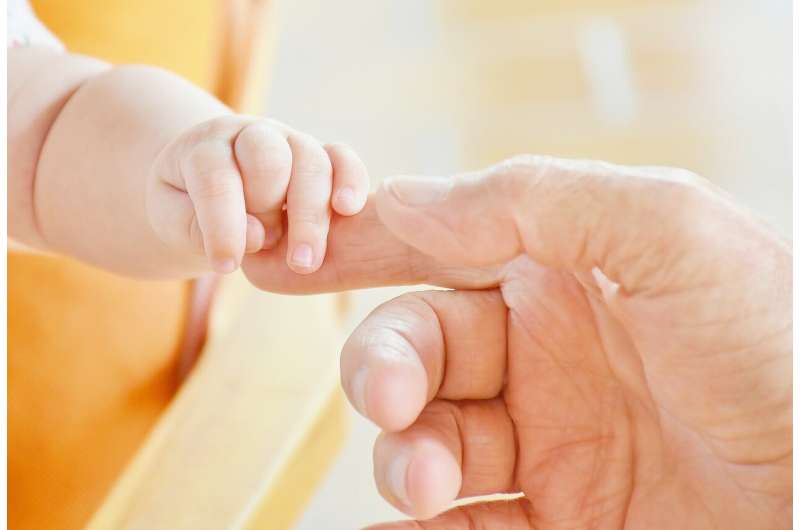
Credit: CC0 Public domain
American babies died in the months after the Supreme Court’s 2022 decision in Dobbs v. Jackson Women’s Health, and infant mortality was highest among those born with chromosomal or genetic abnormalities, new research shows.
The findings echo previous research analyzing Texas’ experience after a ban on early pregnancy abortions and highlight the consequences of restricting access to abortion care, said Maria Gallo and Parvati Singh, researchers at Ohio State University who led the national performed analysis. to appear in JAMA Pediatrics.
“In the seven to 14 months after Roe v. Wade was overturned, we saw a 7% increase in infant mortality, and a 10% increase in the number of babies born with birth defects,” said Singh, assistant professor of epidemiology.
From 2018 to 2023, monthly infant mortality averaged 5.6 deaths per 1,000 live births, and mortality from birth defects averaged 1.3 deaths per 1,000 live births. When the researchers compared the months after Dobbs to the months before, they found 247 more infant deaths per month than expected and 204 more deaths per month than expected due to chromosomal and genetic disorders.
“I’m not sure people expected infant mortality to increase after Dobbs. It’s not necessarily what people were thinking about. But if you restrict access to health care, it could have a broader impact on public health than can be anticipated. ” said Gallo, professor of epidemiology.
This study does not reflect state-to-state differences, but the researchers said they would expect the impact to be greater in states with more restrictive abortion laws.

Time series plot of autoregressive integrated moving average (ARIMA) – filtered residuals. Credit: JAMA Pediatrics (2024). DOI:10.1001/jamapediatrics.2024.4276
To determine the effect of the Dobbs decision on infant mortality, and especially on infant mortality due to congenital problems, the researchers used a national database of birth outcomes to look for patterns from 2018 to 2023.
“Birth outcomes tend to be quite stable in any population, and in a large population like the entire US, infant mortality tends to be quite consistent, apart from some predictable seasonal peaks and troughs,” Singh said. The researchers took these routine changes into account when analyzing the data.
“We are seeing these excess deaths in babies born to people who became pregnant in the first half of 2022,” Singh said.
The researchers saw no increased infant mortality at 14 months after the decision, Gallo said.
“Will this continue beyond this period? That’s an open question,” she said. “It could be that this will indeed be the case because access to abortion care has been closed in some states. But it could also be that eventually more policymakers in the state will realize that this is not what people in the state want and that more constitutional cases will be passed. changes to protect access.”
In the future, the researchers want to look at the impact based on different populations, including those who tend to struggle more when care is limited, and examine maternal mortality rates.
“A broader human toll must be taken into account, including the mental health consequences of refusing abortion care or being forced to carry a fetus with a fatal genetic abnormality,” Singh said.
More information:
Parvati Singh et al, National Trends in US Infant Mortality After Dobbs, JAMA Pediatrics (2024). DOI: 10.1001/jamapediatrics.2024.4276
Quote: US infant mortality rose 7% in months after Dobbs, national analysis shows (2024, October 21), retrieved October 21, 2024 from https://medicalxpress.com/news/2024-10-infant- mortality-months-dobbs-national. html
This document is copyrighted. Except for fair dealing purposes for the purpose of private study or research, no part may be reproduced without written permission. The content is provided for informational purposes only.
 Healthy Famz Healthy Family News essential tips for a healthy family. Explore practical advice to keep your family happy and healthy.
Healthy Famz Healthy Family News essential tips for a healthy family. Explore practical advice to keep your family happy and healthy.


